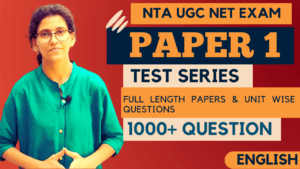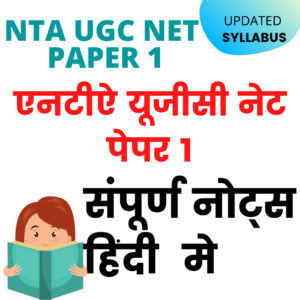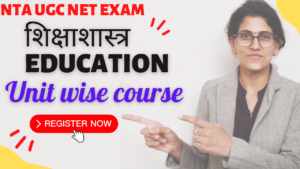Q1 Which of the following best describes a cross-sectional study?
a) Research that studies a population over a long duration
b) Research that investigates a phenomenon at a single point in time
c) Research that is based on in-depth interviews
d) Research that includes only one type of population
Answer: b) Research that investigates a phenomenon at a single point in time
Explanation: Cross-sectional studies capture data at a specific point in time, rather than over extended periods.
Q2 Which research approach seeks to develop an in-depth exploration of a central theme or phenomenon?
a) Case Study
b) Phenomenological
c) Experimental
d) Ethnographic
Answer: b) Phenomenological
Explanation: Phenomenological research aims to understand and interpret the meanings that individuals attach to their personal experiences related to a particular phenomenon.
Q3 Which of the following is a type of non-probability sampling?
a) Simple random sampling
b) Systematic sampling
c) Snowball sampling
d) Stratified sampling
Answer: c) Snowball sampling
Explanation: Snowball sampling is a non-probability sampling technique often used when participants are hard to locate, such as in studies of hidden populations.
Q4 Which term describes an error that occurs when the sample does not accurately represent the population?
a) Measurement error
b) Sampling error
c) Random error
d) Non-sampling error
Answer: b) Sampling error
Explanation: Sampling error is the discrepancy between a sample statistic and its population parameter, arising from the fact that the sample is not a perfect representation of the population.
Q5 Which type of research aims at deriving conclusions from the facts at the researcher’s disposal?
a) Deductive research
b) Inductive research
c) Descriptive research
d) Empirical research
Answer: a) Deductive research
Explanation: Deductive research starts with a theory and tests specific hypotheses derived from that theory.
Q6 Which of the following is an essential feature of the research process?
a) Objectivity
b) Subjectivity
c) Personal bias
d) Opinion-based
Answer: a) Objectivity
Explanation: Objectivity ensures that the research findings are free from personal biases and are based on facts.
Q7 When a factor external to the experiment might be responsible for the observed effect, it is called:
a) Intervening variable
b) Independent variable
c) Confounding variable
d) Dependent variable
Answer: c) Confounding variable
Explanation: A confounding variable is an extraneous factor in a study that may affect the results, making it unclear whether the observed effects are due to the independent variable or the confounding variable.
Q8 Which type of validity concerns the degree to which a test measures the construct it claims to be measuring?
a) Criterion validity
b) Content validity
c) Construct validity
d) External validity
Answer: c) Construct validity
Explanation: Construct validity refers to the degree to which inferences can be made from the operationalizations in your study to the theoretical constructs on which those operationalizations were based.
Q9 The literature review in research serves the purpose of:
a) Identifying gaps in existing knowledge
b) Proving that the researcher has read a lot
c) Making the report more convincing
d) Adding length to the research report
Answer: a) Identifying gaps in existing knowledge
Explanation: The primary purpose of the literature review is to understand the existing body of knowledge and to identify areas that have not been explored or need further investigation.
Q10 Which type of research is characterized by the researcher’s involvement and changes in a real-world setting?
a) Action research
b) Experimental research
c) Observational research
d) Survey research
Answer: a) Action research
Explanation: Action research is typically carried out by professionals with the aim of improving their strategies, practices, or understanding of their own work.
Q11 Which research design aims at finding the cause-and-effect relationship?
a) Descriptive
b) Experimental
c) Ethnographic
d) Historical
Answer: b) Experimental
Explanation: Experimental research manipulates one variable to determine if changes in one variable cause changes in another variable, thus identifying a cause-and-effect relationship.
Q12 Which of the following is an example of qualitative data?
a) Weight of a person
b) Number of students in a class
c) Feelings of a patient about a treatment
d) Age of respondents
Answer: c) Feelings of a patient about a treatment
Explanation: Qualitative data deals with descriptions and characteristics that can be observed but not measured. Feelings, opinions, and experiences fall under this category.
Q13 The main objective of a pilot study is to:
a) Test the hypothesis
b) Test the research design
c) Save time and money
d) Achieve the research objective
Answer: b) Test the research design
Explanation: A pilot study is a small-scale test of the research methods and procedures to be used, helping to refine and improve the design before undertaking the main study.
Q14 Which term is used for the repetition of research by other researchers to verify its results?
a) Confirmation
b) Authentication
c) Replication
d) Duplication
Answer: c) Replication
Explanation: Replication involves conducting a study again to see if the results can be reproduced, ensuring the original results were not due to random chance.
Q15 Which of the following sampling methods ensures every possible combination of units has an equal chance of being selected?
a) Stratified sampling
b) Systematic sampling
c) Simple random sampling
d) Cluster sampling
Answer: c) Simple random sampling
Explanation: In simple random sampling, every individual (or combination of individuals) has an equal chance of being included in the sample.
Q16 Which type of data scale has a defined zero point and allows for division and multiplication?
a) Ordinal
b) Nominal
c) Interval
d) Ratio
Answer: d) Ratio
Explanation: The ratio scale is the only one that has a true zero point and allows for the full range of mathematical operations.
Q17 Which of the following best defines a variable?
a) A phenomenon that can be quantified
b) A cause-and-effect relationship
c) A concept that varies between individuals, groups, or over time
d) A fixed characteristic
Answer: c) A concept that varies between individuals, groups, or over time
Explanation: A variable is a characteristic or attribute that can assume different values among different individuals or across different times.
Q19 A structured questionnaire is one in which:
a) There are no predetermined questions
b) Questions are presented in a specific sequence
c) Respondents have the freedom to answer in any manner they like
d) Questions change based on the respondent’s answers
Answer: b) Questions are presented in a specific sequence
Explanation: In a structured questionnaire, questions are pre-decided and presented in a specific sequence, ensuring uniformity across respondents.
Q20 Which type of research is primarily concerned with the application and use of existing knowledge?
a) Basic research
b) Applied research
c) Descriptive research
d) Explanatory research
Answer: b) Applied research
Explanation: Applied research focuses on solving practical problems using existing knowledge.
Q21 Which research approach aims to study culture from the insider’s perspective?
a) Phenomenological
b) Ethnographic
c) Experimental
d) Historical
Answer: b) Ethnographic
Explanation: Ethnographic research seeks to understand and describe a culture from the perspective of a member (or insider) of that culture.
















